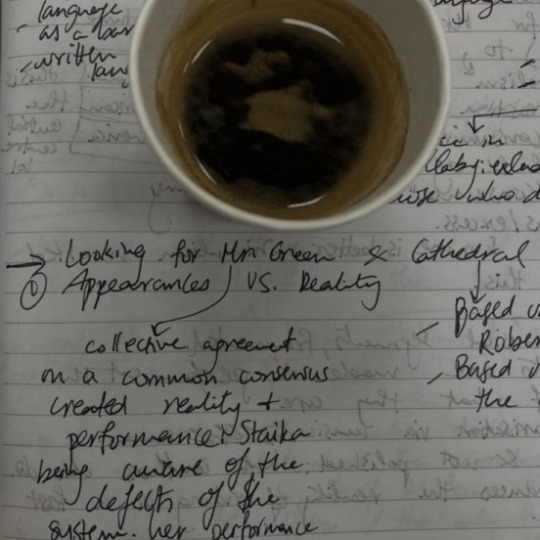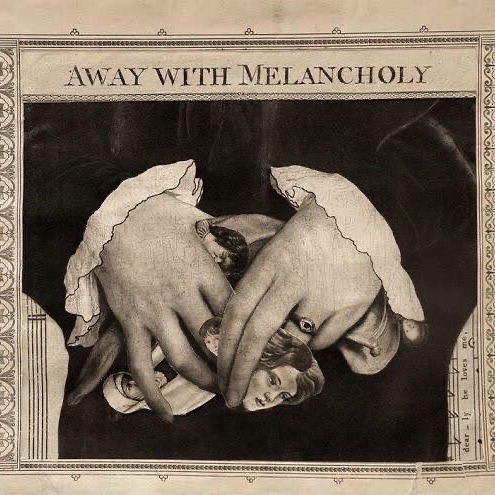#Clean Architecture
Explore tagged Tumblr posts
Text
Clean Architecture: A Blueprint for Scalable and Maintainable Software
Clean Architecture is a design approach for building flexible, maintainable, and testable apps by keeping concerns separate and well-defined. Let's deep dive in in this article!
Clean Architecture is a software design philosophy that helps developers build flexible, maintainable, testable, and scalable applications. It emphasizes separation of concerns, ensuring that different parts of the application have clear responsibilities and do not mix unrelated logic. Think of it like designing a beautiful city with a well-planned infrastructure—roads, districts, utilities, and…
#Clean Architecture#Good Programming Practice#Onion Architecture#Software Development#Software Engineering#SOLID
0 notes
Photo

What is CQRS and how might it fit into Clean Architecture? CQRS (Command and Query Responsibility Segregation), is a pattern that separates read and update operations for a data store. It can fit really nicely into Clean Architecture because of the alignment with separation of concerns that the pattern and the software architecture both support. Start with some CSharp code examples and tips to get started with these two things in this article! Read the article here: https://www.devleader.ca/2024/02/07/cqrs-pattern-in-c-and-clean-architecture-a-simplified-beginners-guide/ #CleanArchitecture #CSharp #DotNet
0 notes
Text
Data Transfer Object (DTO): Também conhecido como Classe de Resultado. No contexto da Arquitetura Limpa, o DTO é uma classe mais simples usada para transferir dados entre diferentes partes do sistema, geralmente para passar informação entre uma camada e outra.
0 notes
Text
Clean Architecture: ¿Realmente mi arquitectura es Clean?
La Clean Architecture, formulada por Robert C. Martin, también conocido como “Uncle Bob”, es un enfoque de diseño de software que enfatiza la separación de intereses y la independencia de marcos y herramientas. Este enfoque promueve la creación de sistemas que son fáciles de mantener y extender, lo que resulta en software de alta calidad y larga vida útil. En la era moderna del desarrollo de…

View On WordPress
0 notes
Text









sleep like a winter bear.
#jangwonie.#vintage moodboard#light academia moodboard#winter moodboard#soft academia#brown moodboard#bts moodboard#dark coquette#alternative moodboard#coquette moodboard#chaotic academia#romanticism#romantic academia#ravenclaw#messy moodboard#architecture#fresh moodboard#study aesthetic#classic academia#moodboard#pastel moodboard#light academia#dark academia#kpop carrd#carrd packs#random moodboard#old aesthetic#clean moodboard#kpop locs
8K notes
·
View notes
Text

#frutiger aero#frutiger aero aesthetic#y2k#2000s#y2k aesthetic#dreamcore#cybercore#webcore#frutiger aero architecture#frutiger#futuristic#futurecore#clean aesthetic#liminalspace#liminal#liminal spaces
279 notes
·
View notes
Text









𝖿𝖺𝗇𝗍𝖺𝗌𝗍𝗂𝖼 𝗇𝗂𝗀𝗁𝗍 𝗂𝗌 𝖼𝗈𝗆𝗂𝗇𝗀 ✶
#͏͏͏ ͏͏͏ ͏͏͏ ͏͏͏ ͏͏͏ ͏͏͏ ͏͏͏ ͏͏͏ ͏͏͏ ͏͏͏ ͏͏͏ ͏͏͏ ͏͏͏ ͏͏͏ ͏͏͏ ͏͏͏ ͏͏͏ ͏͏͏ ͏͏͏ ͏͏͏ ͏͏͏ ͏͏͏ ͏͏͏ ͏͏͏ ͏͏͏⠀#moodboard#messy moodboard#alternative moodboard#random moodboard#ningning moodboard#minimalist moodboard#minimalism moodboard#aesthetic moodboard#archive moodboard#clean moodboard#kpop moodboard#aespa icons#aespa layouts#aespa moodboard#alt moodboard#brown moodboard#gg moodboard#visual archive#vintage moodboard#asian moodboard#aesthetic pictures#aespa messy moodboard#natural moodboard#ningning icons#ningning#aesthetic#random#dark academia#architecture
72 notes
·
View notes
Text

at the bottom of a hotel
#Liminal Space#Aesthetic#Moody#Empty Spaces#Modern Design#Interior Design#Cafeteria#Common Space#Architecture#Clean Lines#Minimalism#Neutral Tones#Beige Aesthetic#Functional Design#Hotel Vibes#Quiet Moments#Alone#Urban Spaces#Contemporary Design#Light And Shadow#Interior Photography#Design Inspiration#Modern Architecture#Space And Light#Calm Spaces#Structural Design#Interior Styling#Design Details#Visual Storytelling#Tumblr Aesthetic
23 notes
·
View notes
Text

Quaint,
Clean and charming architecture ... Porvoo Finland
52 notes
·
View notes
Text


⚞ ❍ ⿻ . oh, ⊹ ❛ .


˳ ⁺ ⟢ why? ⁘ » . ⏆


© deen ˚ ∿ ◯ ⁺ 𓈒 ༶ 、
21 notes
·
View notes
Text

#academia aesthetic#indie#light acamedia#nature#naturecore#cottagecore#indie spring#spring season#photography#spirituality#hippy aesthetic#spirtitual#spiritual healing#spring#hippylife#healing herbs#hippy#hippie#architecture#crystals#vintage#light academia#soft aesthetic#clean girl#barbie#cottage aesthetic
24 notes
·
View notes
Photo

How does MediatR fit into Clean Architecture? Leveraging a Mediator pattern in Clean Architecture can help by allowing modules to communicate with each other without coupling them together. Instead of hand-rolling your own Mediator implementation, we can use the awesome MediatR nuget package to greatly simplify this for us! Learn how these two things can work together with CSharp code examples in this article. Read the article here: https://www.devleader.ca/2024/02/06/c-clean-architecture-with-mediatr-how-to-build-for-flexibility/ #CleanArchitecture #CSharp #DotNet
1 note
·
View note
Text
Sobre Arquitetura Limpa e inseguranças de uma dev júnior/pleno
[09/09/2024]

Acho que a pior parte de não ter tido a oportunidade de trabalhar com pessoas mais experientes é a sensação de que preciso tentar entregar tudo o mais perfeito possível, mas não sei exatamente *como*. Ou até sei, mas não o suficiente.
E essa sensação piorou significativamente quando entrei no projeto novo em que estou trabalhando. É um código em Flutter muito maduro, um aplicativo com mais de 3 anos de vida e escrito por desenvolvedores experientes.
O problema? Bem. Não existe exatamente um padrão no projeto. Um parte dele usa Arquitetura Limpa em sua melhor forma: arquivos de Repository, Datasource e UseCase bem separados.
Mas a outra parte do app (a maior parte dele) usa apenas uma versão simplificada de Repository e Datasource, sem UseCase.
Agora, toda vez que vou criar uma feature nova, perco umas 2h tentando lidar com a insegurança :P (Obrigada, devs sêniors que não estão mais no projeto e deixaram esse Frankenstein aos meus cuidados!).
Já trabalhei com Arquitetura Limpa antes, mas era muito mais fácil trabalhar com ela quando todo o aplicativo seguia um padrão só. Afinal, eu não precisava pensar muito na utilidade do UseCase antes de começar a escrever o código.
Ao invés disso, no meu trabalho atual eu fico pensando: por que ele escolheu não usar o usecase nessa outra feature? Foi uma escolha? Foi preguiça? Existem momentos em que o UseCase não é necessário? Eu estou escrevendo abstrações demais por nada?
DESCULPA, uma dev júnior que "ganhou" o cargo de pleno está surtando agora.
Esse texto meio diário, então, é uma sessão de estudo com um lembrete para mim sobre alguns conceitos importantes sobre os UseCases dentro da Arquitetura Limpa.
O papel dos UseCases
A Arquitetura Limpa preza pelas responsabilidades bem divididas entre as camadas da aplicação. O papel do UseCase é manter as operações/manipulações de dados separadas da camada de Apresentação.
"Os use cases são responsáveis por executar a lógica de negócios da aplicação, processar dados, realizar ações específicas e coordenar as operações que envolvem os repositórios ou serviços." - Por que precisamos do Use Case?
Esse artigo mitigou um pouco de uma das minhas maiores dores escrevendo UseCases: Tá, mas ele só tá chamando o Repository, por quê tô escrevendo ele? É uma abstração desnecessária?
A resposta é NÃO. Mesmo o UseCase mais simples é útil por causa de 3 fatores:
Separa a lógica de negócio da apresentação - Okay, esse é o objetivo principal do UseCase, mas isso é particularmente útil quando você precisar modificar a lógica relacionada a uma regra de negócio sem impactar negativamente a camada de Apresentação
Facilitar testes - A lógica de negócios isolada também dá mais uma vantagem: facilita na hora da criação de testes. Isso porque agora você não vai depender da implementação do Repository para implementar os testes. Você consegue escrever testes unitários para verificar se a lógica aplicadas às regras de negócio estão certas, criando mocks para simular o comportamento do Repository, por exemplo.
Manutenção de código - Se por acaso você decidir mudar a maneira como os dados são recebidos pela API, você pode fazer isso apenas mudando a implementação do Repository, sem mexer no UseCase.
Esse último tópico abriu os meus olhos para algumas coisas, inclusive. Recentemente o aplicativo passou por uma migração grande de uma parte das chamadas de API. O processo teria sido muito mais simples se tivéssemos um UseCase implementado nessa parte da aplicação!
Usei a Perplexyti.ai para conversar comigo me explicando melhor os conceitos para além das leituras, e foi muito útil! Considero que foi uma sessão de estudo bem produtiva :)
#programação#programming#mobile app developers#diário de dev#software development#clean architecture
1 note
·
View note
Text


Streets in Chicago ☁️

#Chicago#aesthetic#photography#architecture#wallpaper#landscape#city#classic#usa#fall#street#clean#daytime#cloudy
21 notes
·
View notes
Text









sluggish mornings in the rain.
#vintage moodboard#light academia moodboard#rainy aesthetic#soft academia#brown moodboard#gray moodboard#dark coquette#alternative moodboard#coquette moodboard#chaotic academia#romanticism#romantic academia#messy moodboard#architecture#fresh moodboard#study aesthetic#classic academia#moodboard#pastel moodboard#light academia#dark academia#random moodboard#old aesthetic#clean moodboard#typography#nature moodboard#indie moodboard#minimalist moodboard#old money aesthetic#black moodboard
243 notes
·
View notes
Text
youtube
Thirty years ago, a group of permaculture experts purchased 329 acres of degraded land in Western North Carolina with a vision: to restore the landscape while creating a new model of communal living.
What began as an experiment in living well off the land has grown into one of the nation’s oldest cohousing communities, where residents live collaboratively and in close connection with their environment.
The community now spans 13 distinct neighborhoods with over 100 residents, each offering a different approach to shared living. Some neighborhoods function as housing co-ops (North Carolina law requires at least five members for this designation), while others feature apartments, duplexes, or single-family homes.
Earthaven’s infrastructure reflects decades of experimentation and ingenuity. From hydroelectric power generated by mountain streams to solar systems energizing both communal and private spaces, the village is a model of thoughtful design.
Residents live in hand-built homes that range from timber-framed duplexes to snug cob cottages, sharing resources like kitchens, workshops, and gardens. Guided by principles of self-governance, consensus decision-making, and cooperative ownership, Earthaven fosters deep connections—not only with the natural world but also among its members, creating a way of life rooted in resilience and shared purpose.
Recently, Earthaven suffered significant damage from Hurricane Idalia, which tore through the region, leaving many homes and shared facilities in need of repair. The community is currently rebuilding and has launched a fundraising campaign to restore its infrastructure and continue its mission of regenerative living.
—Donate to Earthaven's Hurricane Helene recovery fund: https://www.gofundme.c...
—Take a Virtual Tour: https://www.schoolofin...
—Become a Friend: https://www.schoolofin...
—Take a class with the School of Integrated Living: https://www.schoolofin...
—More videos: / @earthavenecovillage
—Earthaven on Wikipedia: https://en.wikipedia.o...
On *faircompanies: https://faircompanies....
#Kirsten Dirksen#solarpunk#eco village#Earthaven#north carolina#USA#co op#co op housing#sustainable architecture#sustainability#off grid#off grid living#solar power#hydroelectric power#green energy#clean energy#renewable energy#Youtube
14 notes
·
View notes